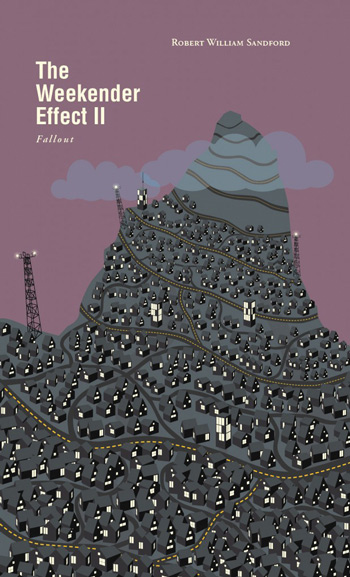What happens when where you live, and most of the people among whom you are forced to live, begin to disgust you?” asks Robert Sandford in his opening to The Weekender Effect II: Fallout, the sequel to his 2008 book The Weekender Effect. He bemoans both the influx of temporary visitors to his mountain town and the subsequent lack of access to sacred places, the sacred now merely a backdrop for the hordes who, in his estimation, don’t love the Rocky Mountains the way he does. Sandford, who holds the Global Water Futures Chair in Water and Climate Security at the United Nations University, wonders if he can keep his “place” in the part of the world he grew to love as a young man so that “when my ashes are spread among these peaks, I will… be one with them.” This book, he tells us, is his attempt to answer that question.
Fallout shares Sandford’s insights into the problems one encounters when more people want to live (or simply own a second home) in a place where there isn’t room for them all. Indeed, many who buy a house in Canmore are purchasing a second or even third home. The town has about 1,000 empty homes—“wealth storage edifices”—that sit empty much of the time, driving up prices and eroding any chance of community, let alone, for instance, easing pandemic-related concerns or slowing the effects of climate change. With the onset of COVID-19, it “is no longer a weekender effect; it is an all-out invasion.”
The small book is ambitious and, like urban growth, a bit sprawling. It includes summaries of Albert Camus’s The Plague; dips liberally into the works of Wallace Stegner, Terry Tempest Williams, Peter Wohlleben and Suzanne Simard, among others; shares webinars Sandford attended on science and hope; reminds us of the climate crisis and how slow we are to deal with it; and delves into or makes passing reference to the effects of the pandemic on Canmore and elsewhere; anti-mask sentiment, populism, authoritarianism, the Freedom Convoy and Indigenous storytelling—all interesting and all connected to a greater or lesser degree to Sandford’s concern about the “all-out invasion,” yet not incisively knit into his opening plaint, the overwhelming feeling of loss (and disgust).
The book concludes with six climate change strategies—cultivating wonder, following “the science,” maintaining hope, finding ways to “tell his own story,” building community, and encouraging/supporting others—which can also, ultimately, be read as Sandford’s strategies for not giving in to despair. And yet I was unable to read the many topics the book explores this way and was instead left wishing it had kept to a smaller focus and probed more deeply into the questions it opens with.
Astrid Blodgett is the author of two books of short stories.
_______________________________________


